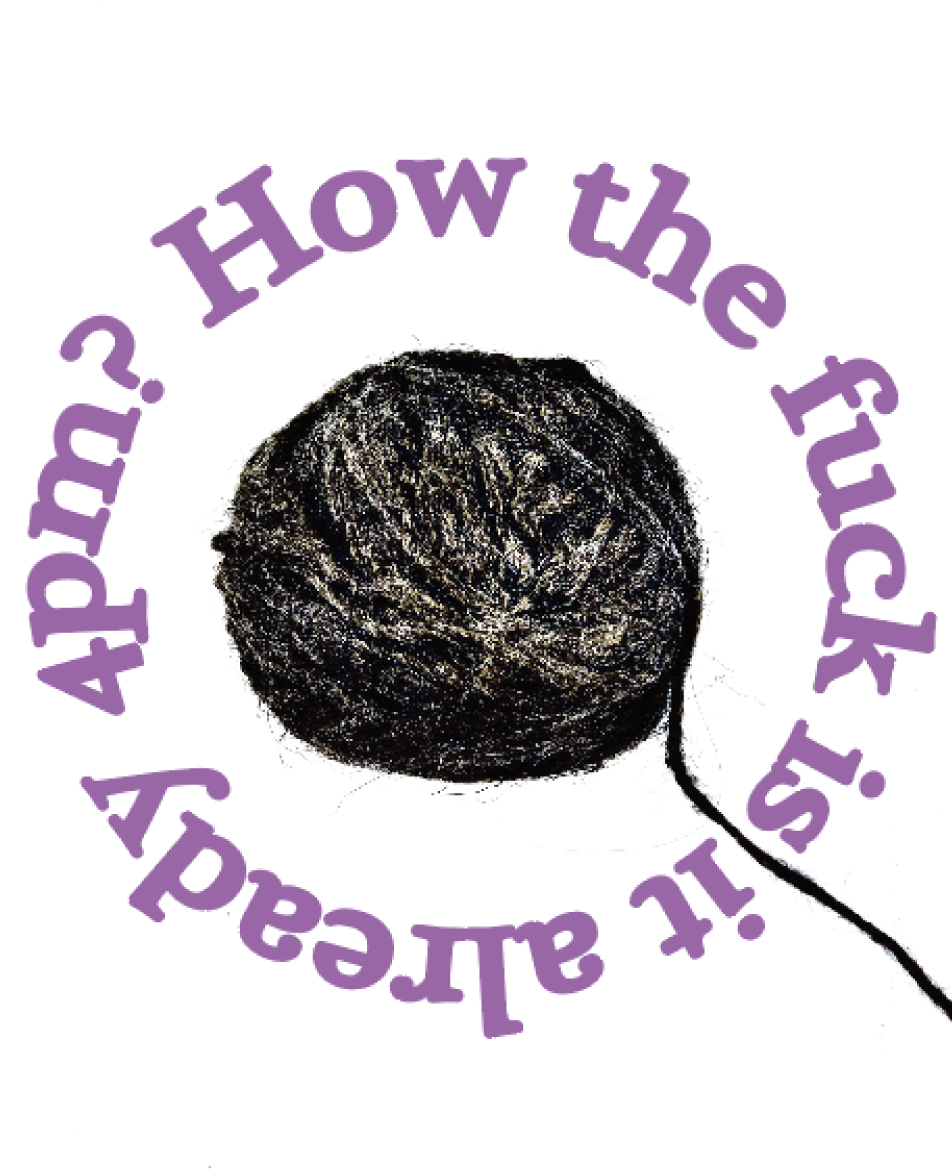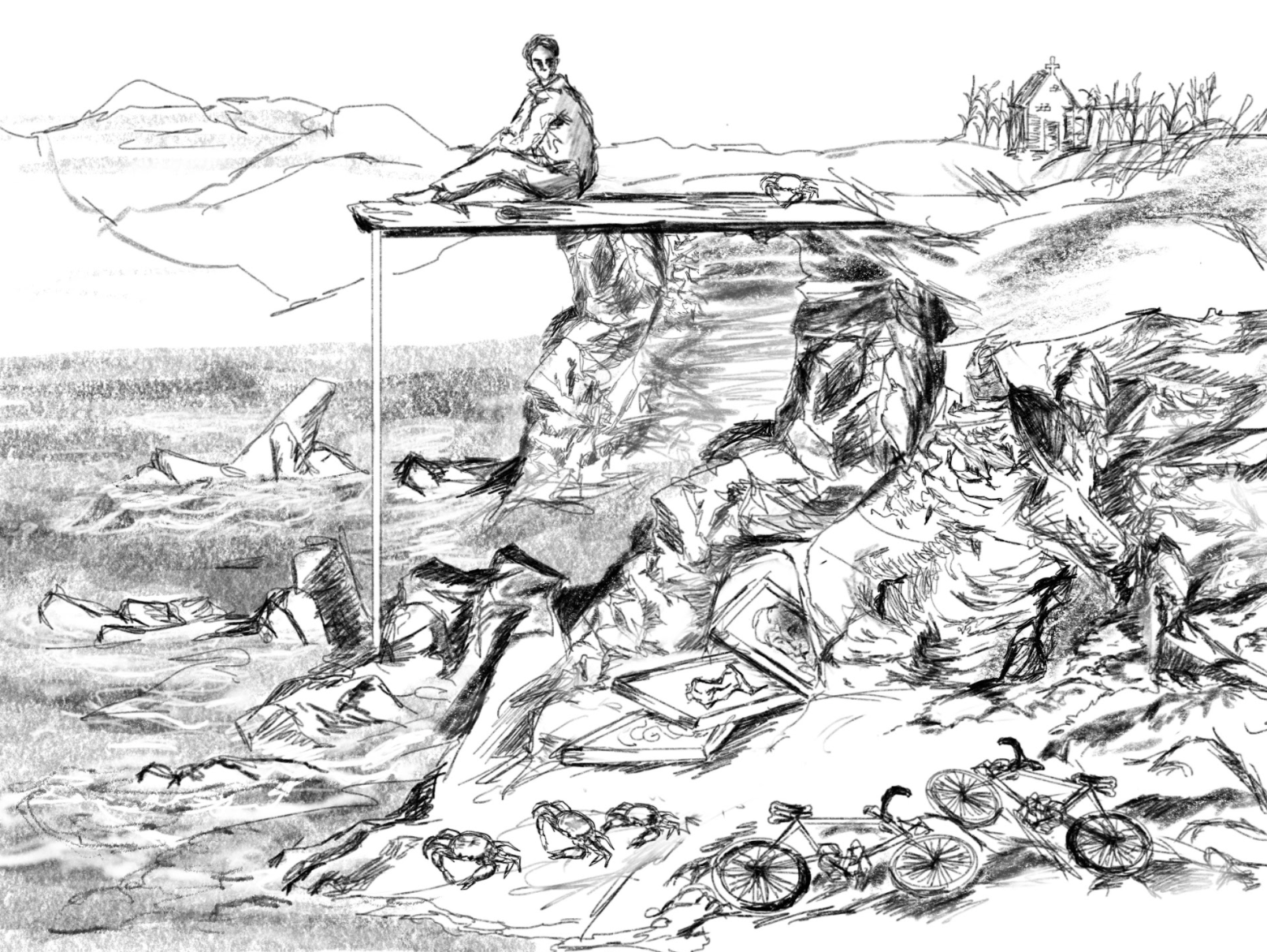What happens when you test positive for COVID-19 at Yale.
“Yeah, I’m getting into the rhythm of classes and everything, and I’m just feeling like I have my sea legs,” a close friend told me four weeks into this semester––the first of my senior year. I remember looking down at my own legs then and thinking, these are not sea legs.
Three weeks earlier, on the first Friday of the semester, on the day before my twenty-second birthday, a year and a half after the start of the pandemic, six months after my second dose of Pfizer, roughly a week after I had gone to a friend’s birthday party in Bushwick, and a day before I ended up alone outside Maison Mathis, I opened the MyChart app on my phone to check my weekly COVID test result: positive.
Having spent last year in New Haven doing online classes, living off campus, and getting tested in a standing coffin in the basement of my residential college twice a week, I had checked my MyChart test result at least forty times before. It had always been negative. Still, there were always familiar nerves when opening a new result, a fresh batch of internal questions and speculations about what would happen if it did, in fact, come back positive. How the fuck would I tell my roommates? Would I get taken away by a team of guys in hazmat suits and forced to live inside an insulated plastic bubble in isolation housing? Would I have to talk to my dean?
Despite FAQ sheets on the Yale Health website outlining the need to stay home and follow the advice of your medical provider, it seemed like every story that I heard last year was different. Some people moved to Old Campus isolation housing; some off-campus students rented Airbnbs so that their roommates would feel more safe. Some isolated for a full two weeks; others were released earlier. Some close contacts stayed locked in their rooms, while others felt confident enough to resume some semblance of normal social life. The lingering question then, was whether or not each student determined the terms of their own isolation, or whether Yale told them exactly what to do.
When I opened my positive test result, all I wanted was for Yale to tell me exactly what to do.
—
I am sitting on the edge of my bed, lacing up my boots and getting ready to head out to dinner with a group of friends. My phone vibrates in my lap and I think, yeah, I should probably check the result, just for some added peace of mind. Positive, typed in bold black lettering. Fuck. I had a mild cough for a few days, but I’d also been smoking all summer and just assumed it was one of those weeks. Don’t panic, I think to myself, someone is going to call and tell me what to do, and everything is going to be fine. I put a mask on and peer out through a crack in the door to look at one of my roommates, sitting at our kitchen table. “Helena,” I say. “I tested positive.”
“OK, OK, don’t panic. What do we do?” she says, half getting out of her seat. “What did they say to do?” Nobody has called yet. There are no instructions, just the white rectangle on my phone screen with the result. After a year and a half of watching people get COVID, it actually happens and I have no fucking clue what to do. I Google “yale covid test positive” and find there are at least three links with different guidelines and FAQs. I am redirected to a CDC webpage called “What to do if you are sick?” Apparently, I need to isolate myself and monitor my symptoms. Is that it? There should be alarms going off. Someone should be knocking down my door and carrying me away. At the very least, somebody should have called by now. My roommates are now wearing masks, sitting in the living room on the other side of my bedroom door, waiting.
About an hour and a half after reading the result, somebody calls. It’s a nurse whose name I don’t catch. She asks me whether I’m aware that I have tested positive. Yes, I’m aware, I say. Do you have symptoms? Nothing more than a mild cough. Do you know where you might have been exposed to COVID? I can’t be 100 percent sure, but probably at a party in New York last weekend.
The nurse and I speak on the phone for about half an hour, going over my every move for the past week, everyone I have been in contact with, every surface on campus I might have touched. She tells me that a contact tracer will be in touch the next day, and that I should isolate in my bedroom for the next ten. She tells me that other nurses will call to check in on my condition, and that I should schedule another test for the next day to make sure it wasn’t a false positive. I listen to her instructions and try to think of a game plan.
Four of us live in a small apartment on Dwight Street, sharing one bathroom and one kitchen. Okay, so, if I go to the bathroom as little as possible, and wear gloves and a mask and wipe down every surface afterwards and you guys bring me food on paper plates and then we set fire to the plates and I don’t step into the kitchen…Clearly, this isn’t going to work. I need to go to isolation housing.
The next morning, a man from contact tracing calls and I go over the list of people and spaces again. At the end of the call, I ask hopefully, “Do you know how I might be able to get to isolation housing?” Unfortunately, that isn’t his department, and I should call the nurse back and ask for more information.
It’s a Saturday, and the nurse isn’t picking up her phone. I try the COVID-19 resource line, where I’m redirected to a man at the Yale ITS help desk who clearly wants to help but has no knowledge of the housing policies for people who test positive. I hang up and try the campus COVID-19 hotline, where I speak with another aspirationally helpful woman who also can’t help. I’m told that the hotline is for reporting purposes, rather than figuring out what to do if you test positive and need help. I try the resource line again, then the hotline, then the resource line, then the hotline. Finally, I try the Yale Student Health phone number, where, again, I’m told to refer back to the instructions given by the original nurse.
Two close friends tested positive a few weeks earlier and lived in quarantine housing in Arnold Hall, so that’s where I need to get. One of the people from the resource line refers me to the Graduate Housing phone number, which I try and get no answer; another man tells me that I should call the School of Music because they run the quarantine housing. He doesn’t explain why the School of Music is in charge of Yale’s COVID patients, but I take his word for it. I end up on hold, classical music blaring in my ear. Nobody answers. At this point, I have made at least ten phone calls. I decide to take matters into my own hands. I pack ten days’ worth of clothes into a yellow duffle bag; put on sunglasses, a cap, and a mask; and walk to the tall metal gate outside Arnold Hall. It’s Saturday afternoon; Maison Mathis is pumping. Everyone from Yale and their parents and their pomeranians are sitting on the folding chairs on the sidewalk, chugging café au lait and waiting for me to infect them.
My swipe access to Arnold Hall doesn’t work; there is nobody on the other side of the gate. I stand outside for ten minutes, acutely aware of the Maison Mathis mob to my right, who are watching me flounder as I search for any sign of life on the other side of the gate. Eventually, tail between my legs, I walk back to my bedroom. In a last ditch effort, my bag still packed on my bed, I call the resource line again, and am finally given a phone number for the people in charge of isolation housing. They tell me that I can move in the next day. On Sunday afternoon, forty-eight hours after testing positive, I make it to the promised land, the inside of Arnold Hall.

—
My time in quarantine housing was pretty great. The food was repetitive (frozen Mac and Cheese, frozen lasagne, tuna sandwiches on rye), but I never had to hassle my roommates; the bathrooms were sanitized; and the bed was the same kind I had slept on for my first two years at college. My symptoms remained relatively mild—cough, fatigue, brain fog. A nurse checked in every few days to monitor symptoms, but other than that, there was nobody to tell you what to do with your time, or with your thoughts. There were no staff inside Arnold Hall, no one watching your every move to make sure you didn’t escape and infect the community. Just silence and empty space. I spent those ten days grateful that I could still taste and smell the microwaved Mac and Cheese that my roommates and friends dropped off food and a paint-by-numbers of a cowboy cat to keep me entertained, and that, by all accounts, I was fine. Most days, all I did was sleep and sit and think.
What I still remember is the disorientation of the whole experience. A year and a half of speculating what it would be like, what it should be like—then, you get it and nothing happens the way you thought it would. Going back to classes, some professors treat you as if you had been intubated in a hospital bed, granting extensions and graces and heaping kindness on you. Others treat you as if nothing happened, bugging you about missed work and asking repeatedly why you are struggling to catch up. There is no specific guide to what to do when you test positive, there is no guide to re-entry, there is no single experience.
When I was released from Arnold Hall, I walked home past Maison Mathis on the opposite of sea legs. It has now been a month and my brain still feels foggy. I dropped a class because of work I couldn’t catch up on. I tell myself that I just couldn’t get into the rhythm. Things are starting to calm down, a break will be good, but I’m still throwing up from the seasickness.

Will Sutherland is a senior in Grace Hopper College and an Associate Editor of The New Journal


